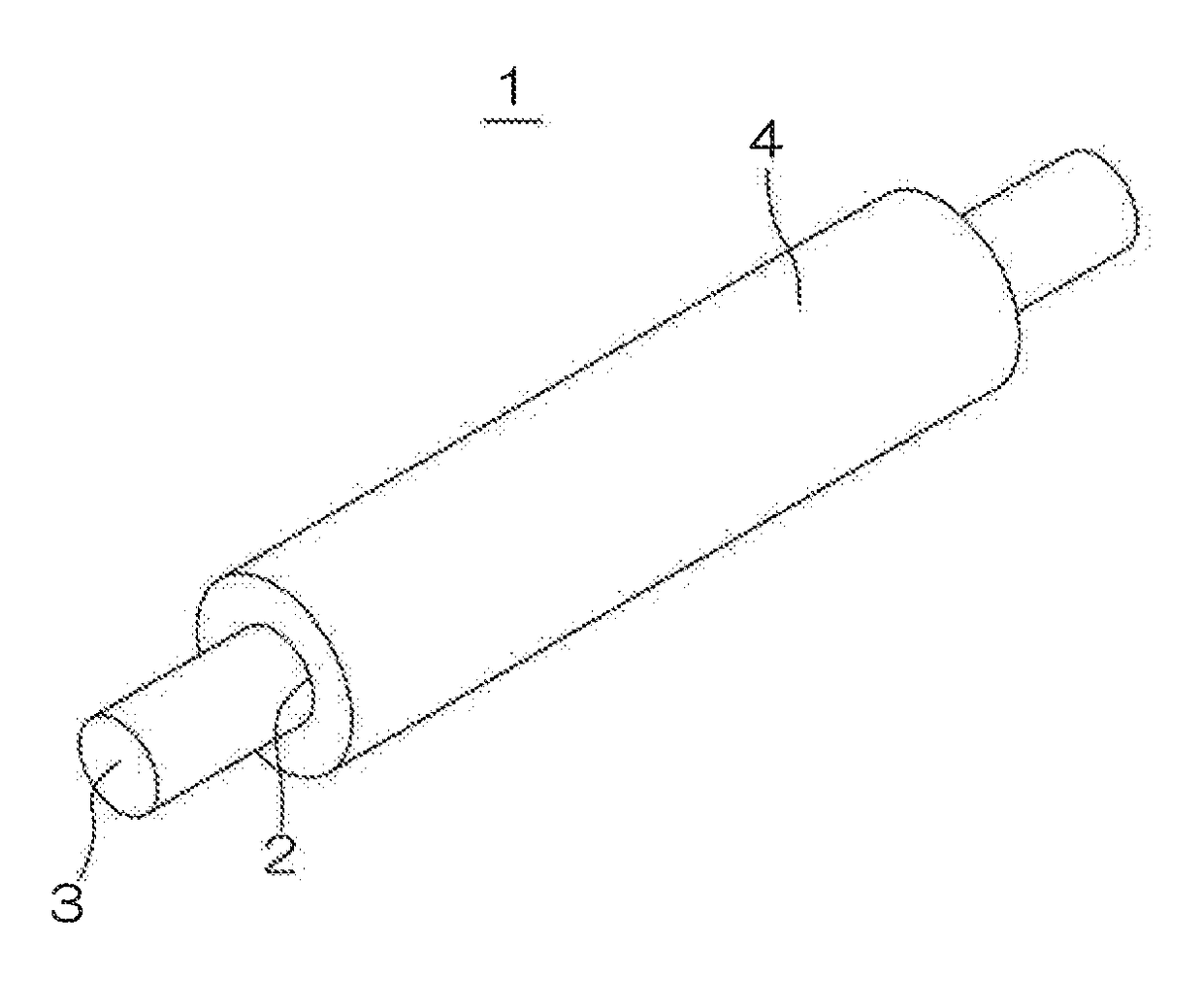Transfer roller, and production method for the transfer roller
a technology of transfer roller and production method, which is applied in the field of transfer roller, can solve the problem of inability to produce a transfer roller with a lower rubber hardness, and achieve the effect of reducing rubber hardness and reducing foam cell diameter
- Summary
- Abstract
- Description
- Claims
- Application Information
AI Technical Summary
Benefits of technology
Problems solved by technology
Method used
Image
Examples
example 1
Conventional Example 1
[0163]An electrically conductive rubber composition was prepared and a transfer roller 1 was produced in substantially the same manner as in Example 1, except that sodium hydrogen carbonate was not blended.
example 2
Conventional Example 2
[0164]A transfer roller 1 was produced in substantially the same manner as in Example 1, except that the tubular body formed in Example 1 was pressurized and heated at 135° C. for 10 minutes in a vulcanization can by pressurized steam in a first-stage foaming step and then pressurized and heated at 165° C. for 3 hours in the vulcanization can by pressurized steam in a second-stage foaming step.
[0165]Conventional Example 2 corresponds to the roller produced by the method described in Patent Document 2 by using OBSH and sodium hydrogen carbonate in combination as the foaming agent, and foaming and crosslinking the tubular body in the vulcanization can without the use of a mold in the first-stage crosslinking step.
[0166]The Asker-C hardness of each of the transfer rollers 1 produced in Examples 1 to 3, Comparative Examples 1 and 2 and Conventional Examples 1 and 2 was measured by the aforementioned measurement method. A transfer roller having an Asker-C hardness o...
example 4
[0172]The electrically conductive rubber composition prepared in Example 1 was formed into a ribbon shape, and continuously fed into an extruder 6 to be extruded into an elongated tubular body 7 having an outer diameter of 10 mm and an inner diameter of 3.0 mm. The tubular body 7 formed by the extrusion was continuously fed out in an elongated state without cutting to be continuously passed through the continuous crosslinking apparatus 5 including the microwave crosslinking device 8 and the hot air crosslinking device 9, whereby the rubber component of the tubular body was continuously foamed and crosslinked. Then, the resulting tubular body was passed through cooling water to be continuously cooled.
[0173]The microwave crosslinking device 8 had an output of 6 to 12 kW and an internal control temperature of 135° C. The hot air crosslinking device 9 had an internal control temperature of 135° C. and an effective heating chamber length of 8 m.
[0174]In turn, the tubular body was cut to ...
PUM
| Property | Measurement | Unit |
|---|---|---|
| cell diameter | aaaaa | aaaaa |
| average cell diameter | aaaaa | aaaaa |
| temperature | aaaaa | aaaaa |
Abstract
Description
Claims
Application Information
 Login to View More
Login to View More - R&D
- Intellectual Property
- Life Sciences
- Materials
- Tech Scout
- Unparalleled Data Quality
- Higher Quality Content
- 60% Fewer Hallucinations
Browse by: Latest US Patents, China's latest patents, Technical Efficacy Thesaurus, Application Domain, Technology Topic, Popular Technical Reports.
© 2025 PatSnap. All rights reserved.Legal|Privacy policy|Modern Slavery Act Transparency Statement|Sitemap|About US| Contact US: help@patsnap.com


